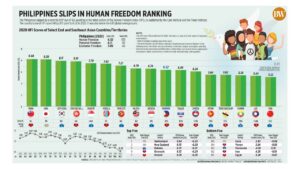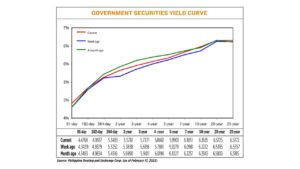Market-driven

“EV industry lobbying for incentives to support new-vehicle adoption,” reports BusinessWorld in its June 13 issue. The story details how the Electric Vehicle Association of the Philippines (eVAP) plans to “press the government to provide incentives that will encourage the broad adoption of electric vehicles.”
I am interested to find out what else eVAP has in mind to jumpstart the EV industry. To date, Executive Order (EO) No. 12 has already reduced the tariffs on certain EVs to zero for five years, to lower EV prices. That zero tariff is already a big advantage over gas- and diesel-fed vehicles that are charged a tariff or import tax of at least 5%, in addition to a 12% value-added tax.
In addition, through Republic Act No. 11697 or the EV Industry Development Act (EVIDA), government agencies and the private sector are encouraged to convert at least 5% of their vehicle fleet to EVs. Just yesterday, I actually saw an electric pick-up truck with cab driving about as a service vehicle of a telecommunication company.
Even the Metro Manila Development Authority had gotten into the picture by exempting EVs from the number coding scheme in the metropolis. As such, EVs need not observe window hours or coding days, regardless of the ending number of their number plates. The exemption, for eight years, is actually provided for under Section 31 of RA 11697.
Obviously, this combination of fiscal and non-fiscal incentives is not enough to actually grow the EV market. More must be done. Even the effort to modernize jeepneys, and possibly convert at least some of them to EVs, seems to have fizzled out. And while the use of e-buses seems to be on the rise, growth has not been fast enough to realize a significant phaseout of polluting buses.
Even Tagaytay City, which embarked on a project to modernize particularly public utility tricycles in the resort city, opted still for gasoline-fed Bajaj tricycles rather than pushing tricycle operators to switch to electric. Imagine if all public utility vehicles in Tagaytay, or Baguio City, were converted to electric? Air quality will improve significantly in these resort towns.
I support eVAP’s aim of quicker migration or transition to EVs. However, I also believe this transition should be market-driven rather than government-driven. Using the government, through policy and regulation, to improve public access to EVs will not be enough to sustain industry growth. And the worse thing to do is to ask the government to mandate transition.
The economics of EVs, for some households, do not make sense. In my case, for instance, I do about 6,000 kilometers a year. At an average mileage of eight kilometers per liter, I consume about 750 liters of diesel fuel annually. Multiply that by an average price of P60 per liter, then I spend about P45,000 on fuel for one year. If I switch to an EV, then I can save about P45,000 annually, or about P225,000 in five years.
If the difference in the retail price or acquisition cost of a gas-fed car and an electric car is more than P225,000, where the electric car is more expensive by at least that amount, then it will take me at least five years to recover that difference through fuel savings. That is assuming I bought a purely electric car, and not a hybrid car that also uses fuel. But in many cases, the price difference is actually more than that.
Note also that over the same five-year period, both vehicles depreciate in value, perhaps even at the same rate. There will be maintenance costs for both as well. And while EVs save on tune-up costs and oil changes, one needs to account for possible battery replacement. Insurance rates may also not be the same, considering that EVs may require special tools for repairs, and special containment in case of battery or vehicle fire.
Moreover, I doubt very much if many of our car dealerships are already well-equipped, or highly competent, to service EVs. It may be a case of mostly hot swapping or assembly replacements, rather than repairs. And last but not least, the most crucial disadvantage of EV ownership now is the limited availability of charging stations in the country. Not to mention EVs’ limited range.
In short, the charging and service infrastructure required to actually help growth the EV market is still not in place. And while there have been efforts to lower acquisition cost, or to improve ease of ownership, via government regulation, we still have a long way to go in terms of providing for sufficient charging infrastructure.
If regular car owners grapple with fuel cost, EV owners grapple with “fuel” supply. And with “limited” supply of charging stations, once demand grows, then costs may go up as well. After all, there is a cost to the infrastructure. And electricity is not given away for free. The funny part is that while EVs may not require fossil fuel, some electricity producers still use fossil fuel to generate power.
I recall a story by Rachel Wolfe in the Wall Street Journal in 2022 on how she and her companion rented an electric car for a four-day road trip but ended up spending more time charging the vehicle than they did sleeping. Also, their 2,000-mile (3,200 kilometers) round trip to Chicago from New Orleans and back cost them $175 (roughly P10,000 at P55:$1) in charging services.
The distance of their four-day trip is like three round trips to Laoag, Ilocos Norte from Manila (500 kilometers one way or 1,000 kilometers round trip), plus a bit of driving around Northern Luzon. And for such a trip, with a vehicle capable of doing 10 kilometers per liter, fuel consumption will be roughly 320 liters. For a diesel-fed vehicle, total fuel cost at P60 per liter will be around P20,000.
I noted in a previous column that given these numbers an EV seems to make sense with respect to “energy” cost. And, with no emissions to boot. The turnoff, however, is that EVs are still expensive locally. Worse, there are only a limited number of charging stations operating in and out of the metropolis. Hybrid, rather than pure EV, may thus be the more practical choice.
Wolfe’s main issue was the lack of charging stations, particularly quick chargers, in many places along the way, even the US. Secondary to this was the long charging times if and when a charger is actually available. In contrast, here and abroad, fuel stations dot main highways and thoroughfares, and filling up doesn’t usually take more than 10-15 minutes. With EVs to date, the compromise is on one’s time, and its cost. The unpredictability of actual rate of battery consumption also makes the switch to EV an even more difficult choice.
In this line, eVAP needs to make public more information, more data from studies, experiments, and research on how EVs, whether purely electric or hybrid, actually perform particularly in Metro Manila’s traffic jams, or flooded streets, or bumpy roads riddled with potholes, and on long-distance trips outside the metropolis. And what is the overall implication of EV use on air pollution.
Moreover, it should make feasible and actionable recommendations on how to best improve the charging infrastructure, and why public and private investments in this regard can make business and economic sense. It is not enough to simply demonize fossil fuels and extol the virtues of EV use relative to protecting the environment. The EV industry should convince the public that making the switch now is actually the practical choice.
Marvin Tort is a former managing editor of BusinessWorld, and a former chairman of the Philippine Press Council




